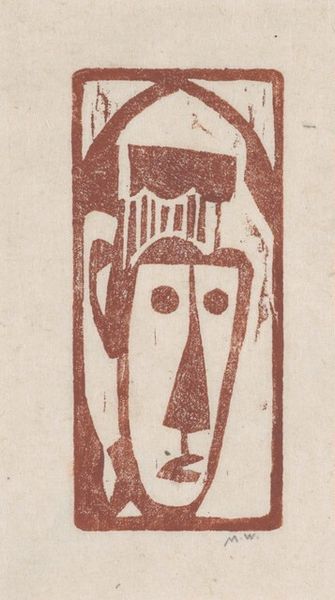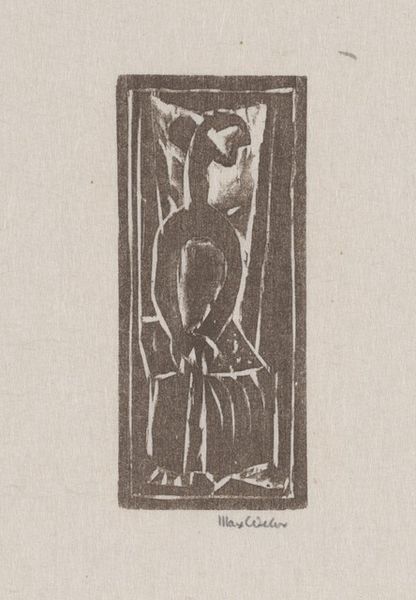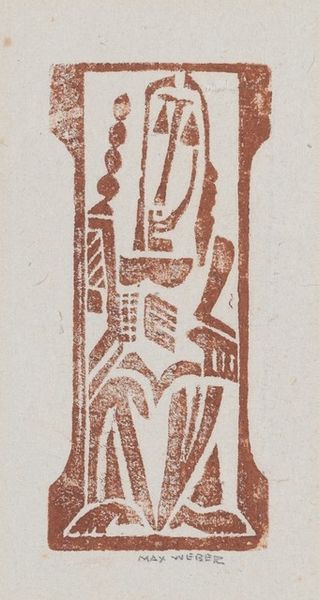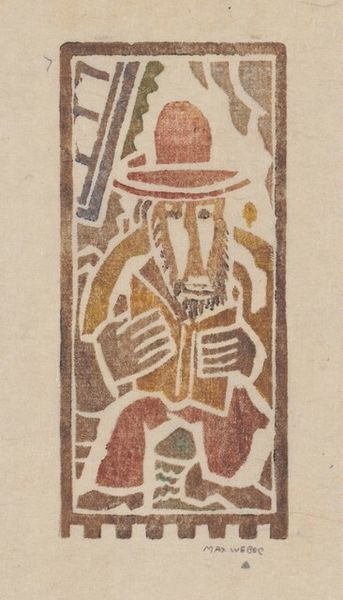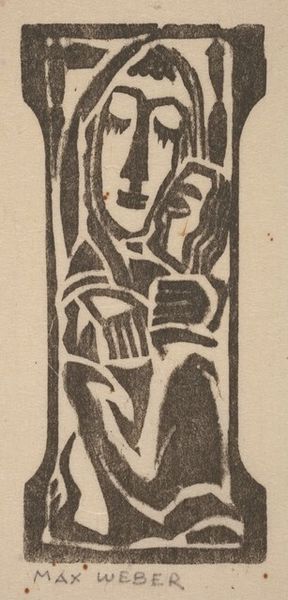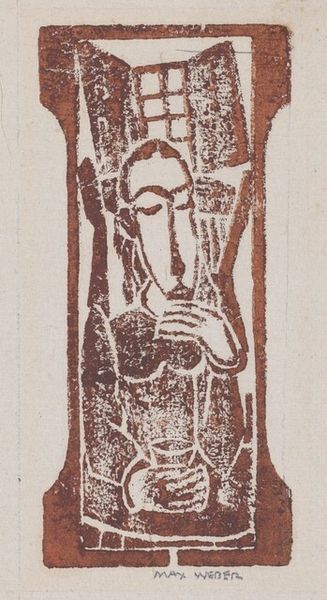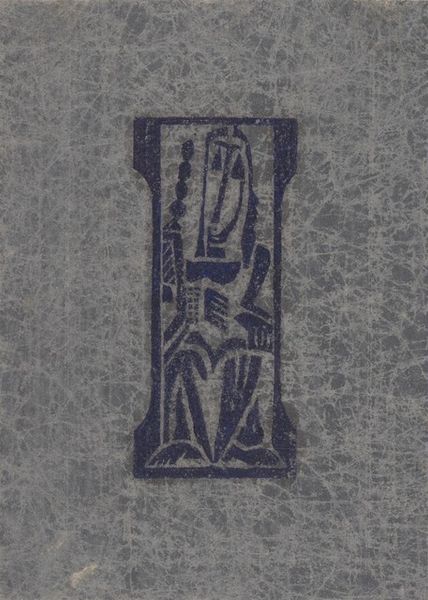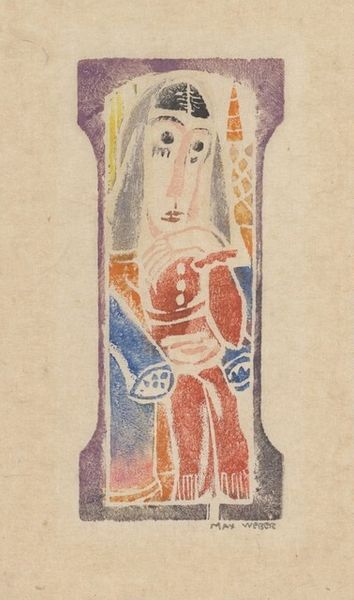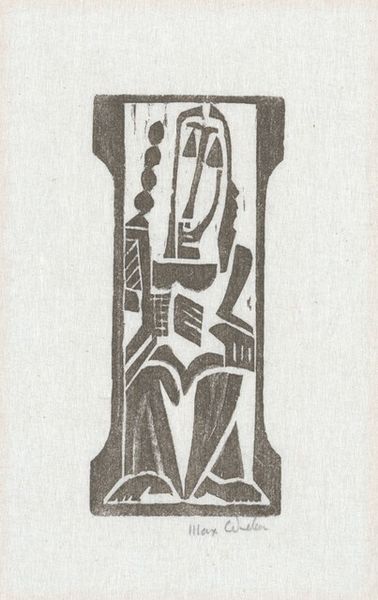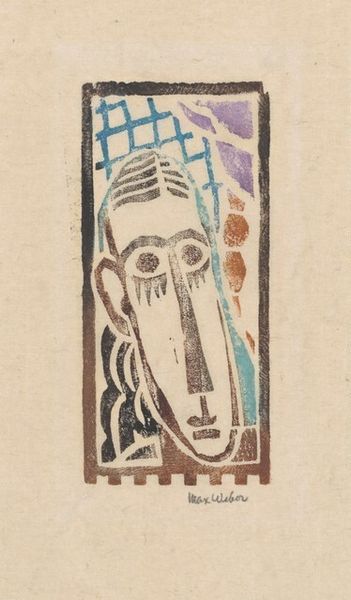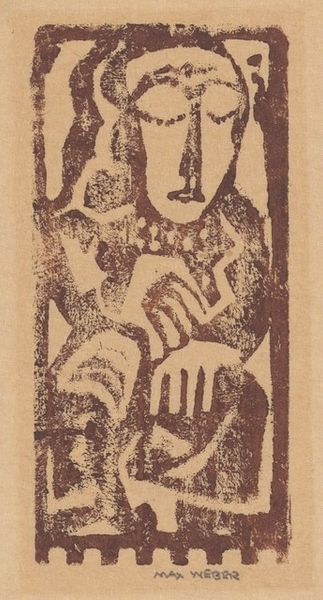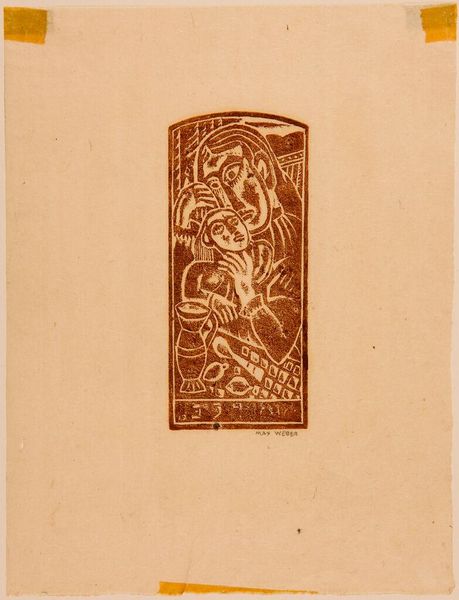
print, woodcut
#
portrait
# print
#
figuration
#
expressionism
#
woodcut
Dimensions: image: 10.64 × 4.92 cm (4 3/16 × 1 15/16 in.) sheet: 35.56 × 22.07 cm (14 × 8 11/16 in.)
Copyright: National Gallery of Art: CC0 1.0
Editor: This is "Woman Seated at Table," a woodcut print created around 1919 or 1920 by Max Weber. The printwork lends the figure a very somber mood and inward gaze. It's making me feel quite still myself. What do you make of this work? Curator: Isn’t it striking? To me, Weber has bottled a moment of quiet contemplation, typical of early mornings. The woman, perhaps lost in thought or simply enjoying her coffee. There's a sense of melancholy, sure, but also resilience, you know? I see someone fortified for the day ahead. Weber was very intuitive and reflective - did you notice how the open window sort of mirrors her open mind? Editor: The window *does* seem symbolically resonant here! Also, it makes me think about this period, the end of World War I and the feeling of change in the air. Did that climate have much to do with his decision-making, would you guess? Curator: I suspect it was everything. Artists like Weber grappled with this kind of world - broken yet pregnant with possibility. Expressionism really let them show how interior, almost shattered, one's emotional space can be in such periods. What really catches my attention are those deliberate, visible marks from the woodcut – he wasn't trying to hide his process; rather embrace the power of that labor to convey feelings, right? Editor: I'm appreciating how the raw marks contribute to the raw emotion! Curator: Absolutely, it is emotion laid bare. So glad it moved you too. These small works hold universes, if we're willing to let them. Editor: That's a perfect summation of how I feel about Max Weber's woodcut. Thanks for the insightful reading.
Comments
No comments
Be the first to comment and join the conversation on the ultimate creative platform.
